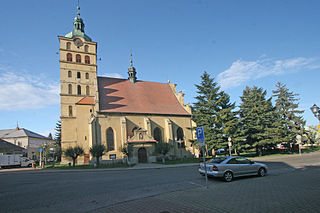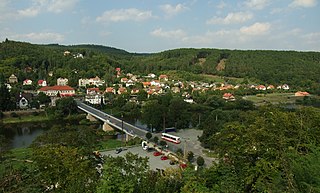
Charles University, also known as Charles University in Prague or historically as the University of Prague, is the oldest and largest university in the Czech Republic, the second university established in the Holy Roman Empire after Bologna. It is one of the oldest universities in the world in continuous operation, the first university north of the Alps and east of Paris. Today, the university consists of 17 faculties located in Prague, Hradec Králové, and Plzeň. Charles University is in the top three universities in Central and Eastern Europe. The institution has been ranked 200–300 in the world as one of the best universities.

Charles IV, also known as Charles of Luxembourg, born Wenceslaus, was Holy Roman Emperor from 1355 until his death in 1378. He was elected King of Germany in 1346 and became King of Bohemia that same year. He was a member of the House of Luxembourg from his father's side and the Bohemian House of Přemyslid from his mother's side; he emphasized the latter due to his lifelong affinity for the Bohemian side of his inheritance, and also because his direct ancestors in the Přemyslid line included two saints.

Chlumec nad Cidlinou is a town in Hradec Králové District in the Hradec Králové Region of the Czech Republic. It has about 5,600 inhabitants.

Karlova Koruna is a château in the town of Chlumec nad Cidlinou in the Czech Republic.

František Maxmilián Kaňka was a Czech architect and builder. He was known for modifying castles, palaces and churches. In 1724 he was appointed emperor's architect.

Brandýs nad Labem-Stará Boleslav is an administratively united pair of towns in Prague-East District in the Central Bohemian Region of the Czech Republic. It has about 20,000 inhabitants and it is the second largest Czech united pair of towns after Frýdek-Místek.

Josef Mocker was a Bohemian architect and restorer who worked in a purist Gothic Revival style.

Zlonice is a market town in Kladno District in the Central Bohemian Region of the Czech Republic. It has about 2,300 inhabitants.

Švihov is a town in Klatovy District in the Plzeň Region of the Czech Republic. It has about 1,700 inhabitants.

St. George's Basilica is the oldest surviving church building within Prague Castle, Prague, Czech Republic. The basilica was founded by Vratislaus I of Bohemia in 920. It is dedicated to Saint George. Primarily Romanesque in style, it is part of the collection of buildings that comprise the castle, the political capital of the nation, and the spiritual center of the Czech state.

Nižbor is a municipality and village in Beroun District in the Central Bohemian Region of the Czech Republic. It has about 2,200 inhabitants.

Hlavenec is a municipality and village in Prague-East District in the Central Bohemian Region of the Czech Republic. It has about 500 inhabitants.

Kněževes is a market town in Rakovník District in the Central Bohemian Region of the Czech Republic. It has about 1,000 inhabitants.

Krušovice is a municipality and village in Rakovník District in the Central Bohemian Region of the Czech Republic. It has about 600 inhabitants.

Valeč is a municipality and village in Karlovy Vary District in the Karlovy Vary Region of the Czech Republic. It has about 300 inhabitants. The village centre is well preserved and is protected by law as an urban monument zone.

Chudenice is a market town in Klatovy District in the Plzeň Region of the Czech Republic. It has about 800 inhabitants.

Czech Baroque architecture refers to the architectural period of the 17th and 18th century in Bohemia, Moravia and Silesia, which comprised the Crown of Bohemia and today constitute the Czech Republic.

Josef Calanza Max was a sculptor from the Austrian Empire. His brother was the sculptor Emanuel Max.

The Vrtba Garden in Prague is one of several fine High Baroque gardens in the Czech capital. Like three other Baroque gardens the Vrtba Garden is situated on the slope of Petřín Hill, in the Malá Strana section of the city. In the midst of an expansive moment in Prague's history during the 1710s and 1720s, the garden was laid out by František Maxmilián Kaňka, who was renovating the Vrtba palace for Jan Josef, Count of Vrtba. Though the palace has undergone extensive reconstructions in the succeeding centuries, the garden retained its Baroque features and the original statuary and sculptural decor by Matyáš Bernard Braun.

The Church of the Assumption of the Virgin Mary and St. Charles the Great is located in the Karlov area of Prague. The originally Gothic church was rebuilt and augmented in baroque style. The church is a part of the former convent of the Augustinian Order in Prague's Karlov.

























